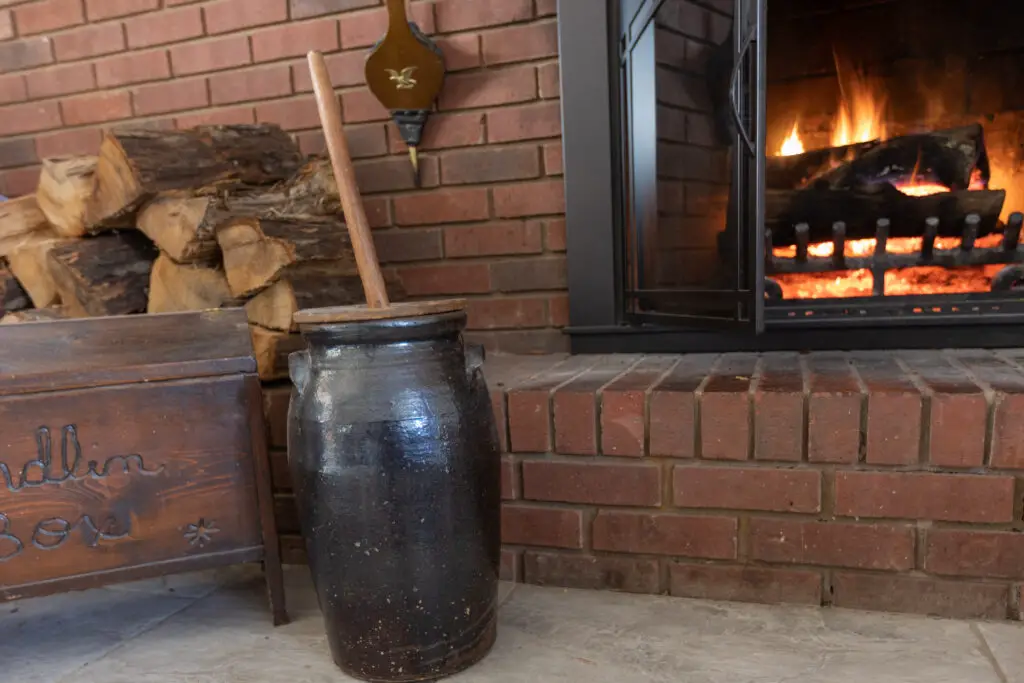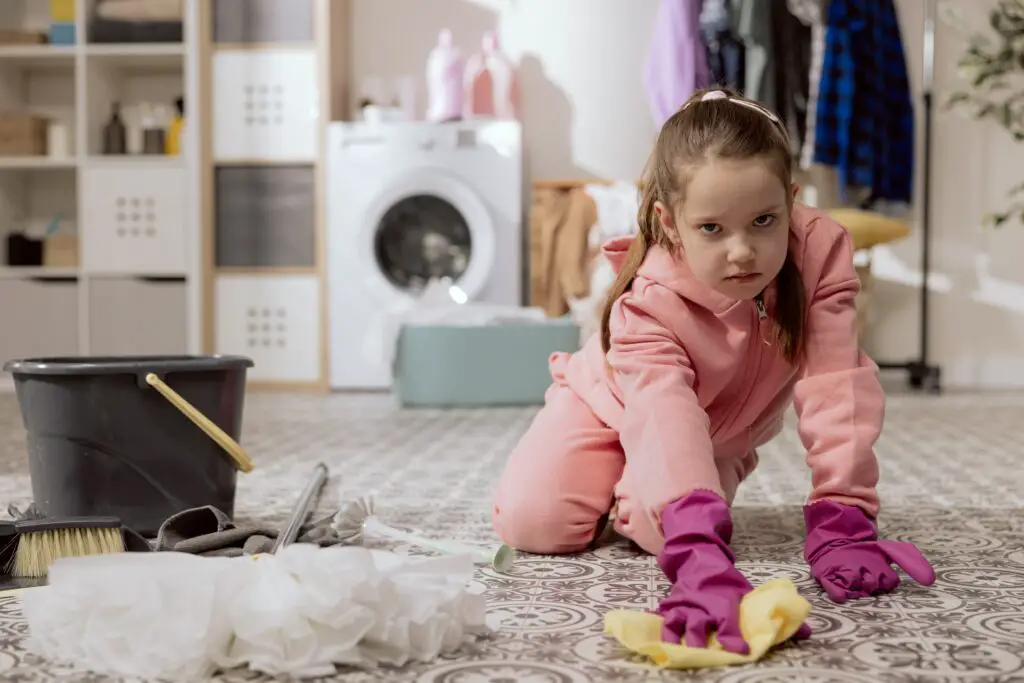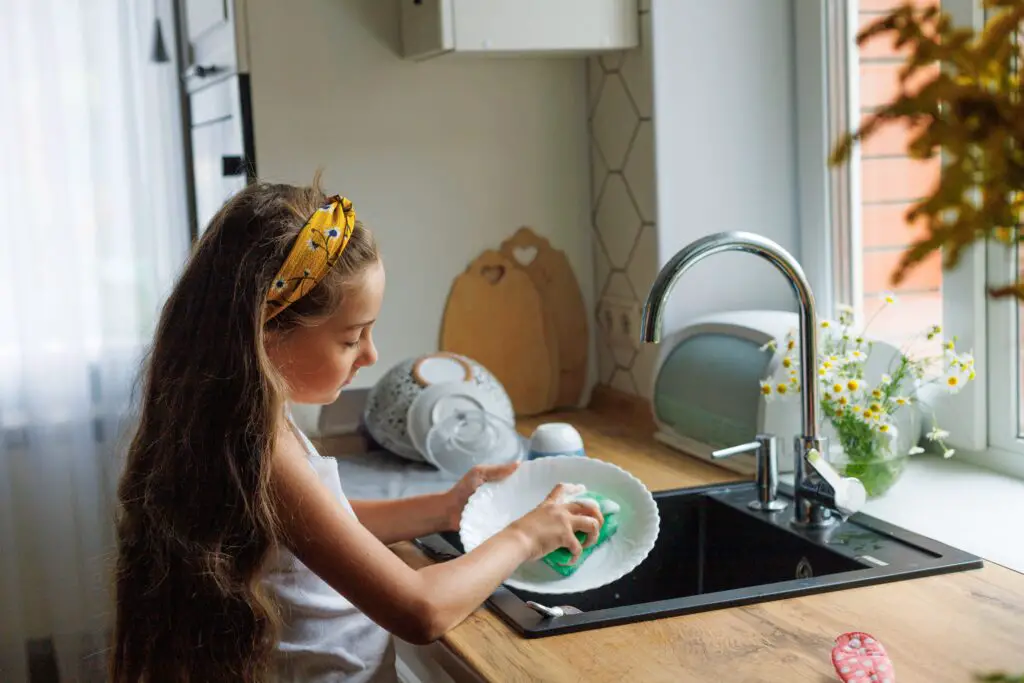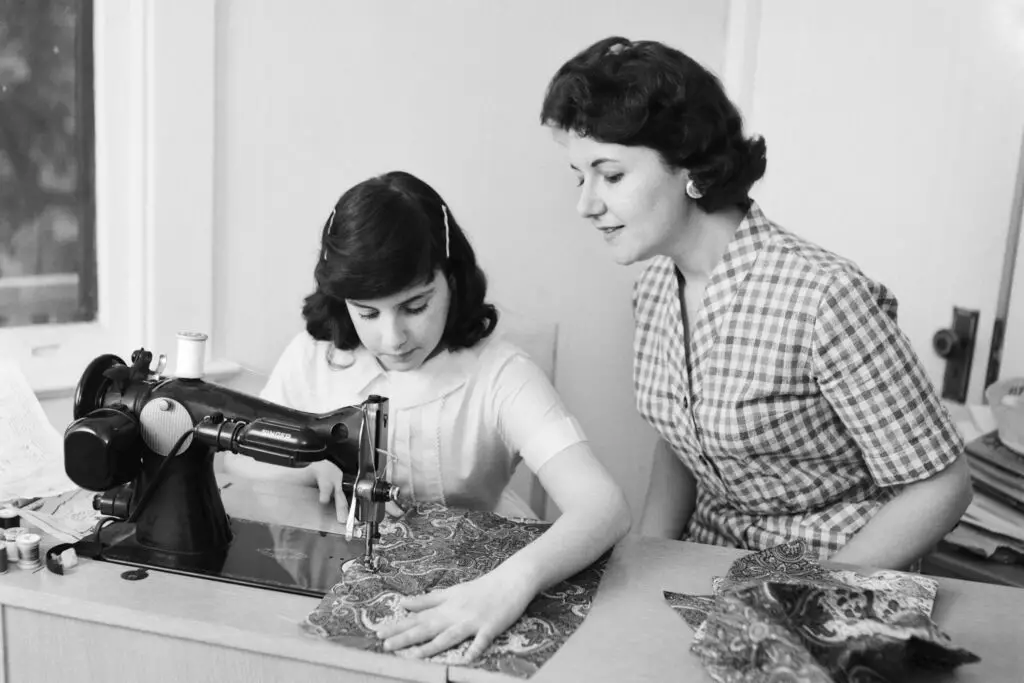1. Churning Butter

In the old days, kids were tasked with churning butter, a chore that seemed endless and sweaty but was meant to teach patience and perseverance. A wooden butter churn, usually operated by hand, would make young ones work for what we take for granted today: a simple scoop of creamy butter. The rhythmic motion of the churn was supposed to instill a sense of accomplishment, as it could take hours of hard work to get the consistency just right. This long, drawn-out process taught children the value of seeing a task through to completion.
While it might sound like a forgotten relic of the past, the idea behind churning butter was to build character. It gave children a firsthand experience of how much effort it took to create something from scratch, a lesson in appreciating the work that goes into everyday items. As simple as it was, it connected children with a process that we now view as outdated, showing them that things worth having aren’t always instant.
2. Scrubbing the Floors

Before the advent of fancy vacuums and modern cleaning products, kids were often put to work scrubbing floors by hand with a stiff-bristled brush and soap. This backbreaking chore, while hard on the knees, was designed to teach children the importance of cleanliness and attention to detail. The repetitive motions of scrubbing were supposed to make them more mindful of their surroundings and develop a good work ethic. It wasn’t just about getting the floor clean, but about instilling a sense of responsibility for keeping their environment tidy.
Children would often end up on their hands and knees, scrubbing away the grime that built up over time, teaching them that every little bit of dirt required attention. It wasn’t glamorous, but it was thorough work that encouraged kids to take pride in their efforts. In a way, it also emphasized the value of patience—after all, floors don’t get spotless in a few minutes.
3. Hand-Washing Dishes

Long before dishwashers were a household staple, kids were tasked with the endless cycle of hand-washing dishes. This chore could be a true test of endurance, as it involved scrubbing plates, pots, and pans by hand—usually after every meal. The repetitive nature of this task helped children develop a sense of routine and responsibility. But beyond the cleanliness factor, it was a chance to learn to take care of household items, especially when that fragile china or heavy skillet was involved.
Although it may have felt like an eternity standing at the sink, the process taught kids the value of cleanliness, responsibility, and teamwork. It also helped them understand that chores weren’t just about getting things done quickly but doing them properly. The clink of dishes and the sudsy water made it clear that sometimes, the most rewarding tasks take the longest to complete.
4. Polishing Silverware

Silverware polishing was another forgotten childhood chore that, while less common today, was once a ritual in many households. This task involved using a special cloth to shine up every fork, knife, and spoon to a gleaming, mirror-like finish. For children, it was a somewhat tedious job, often done on a Saturday morning while everyone else was relaxing. But the goal was to teach kids attention to detail and an appreciation for the finer things in life, as well as the patience required to make something look perfect.
The task wasn’t just about making silver sparkle—it was about learning the value of careful maintenance and how every object, no matter how small, deserved attention. Plus, it allowed children to feel a sense of pride in the household, knowing they were contributing to the family’s dignity and presentation. It may have felt like busy work at the time, but the lessons learned were anything but trivial.
5. Mending Clothes

Instead of tossing out torn clothes, many children in the past were taught how to mend them with a needle and thread. Whether it was stitching up a hole in their pants or replacing a button, the skill of sewing was meant to teach children self-reliance and the importance of caring for their belongings. Mending clothes wasn’t always fun, especially when the thread kept knotting, but it made kids understand the value of preserving what they had. The meticulous work was a way of instilling responsibility, showing that everything—from clothes to toys—deserved a little extra care.
By taking on this task, children also learned problem-solving. They discovered how a simple skill like sewing could save money, keep items in good shape, and foster a sense of pride in their work. These small repairs, often done on a rainy afternoon, encouraged kids to be resourceful and not wasteful.
6. Gardening

Gardening was once a favorite childhood chore that wasn’t just about pulling weeds or watering plants, but about fostering a deep connection to nature. Kids were often assigned a patch of garden to tend, learning firsthand how food and flowers grow from the soil. The act of planting seeds, nurturing them, and watching them sprout and bloom taught children patience and a sense of accomplishment. It wasn’t always a glamorous job, especially when dealing with pests or dealing with dry soil, but it built resilience.
This task also taught the value of hard work and patience, as children would spend hours digging, planting, and maintaining their gardens. The garden became a place for children to learn about the cycles of nature and the importance of nurturing something over time. It wasn’t just about getting the job done—it was about understanding the bigger picture and the life that came from their efforts.
